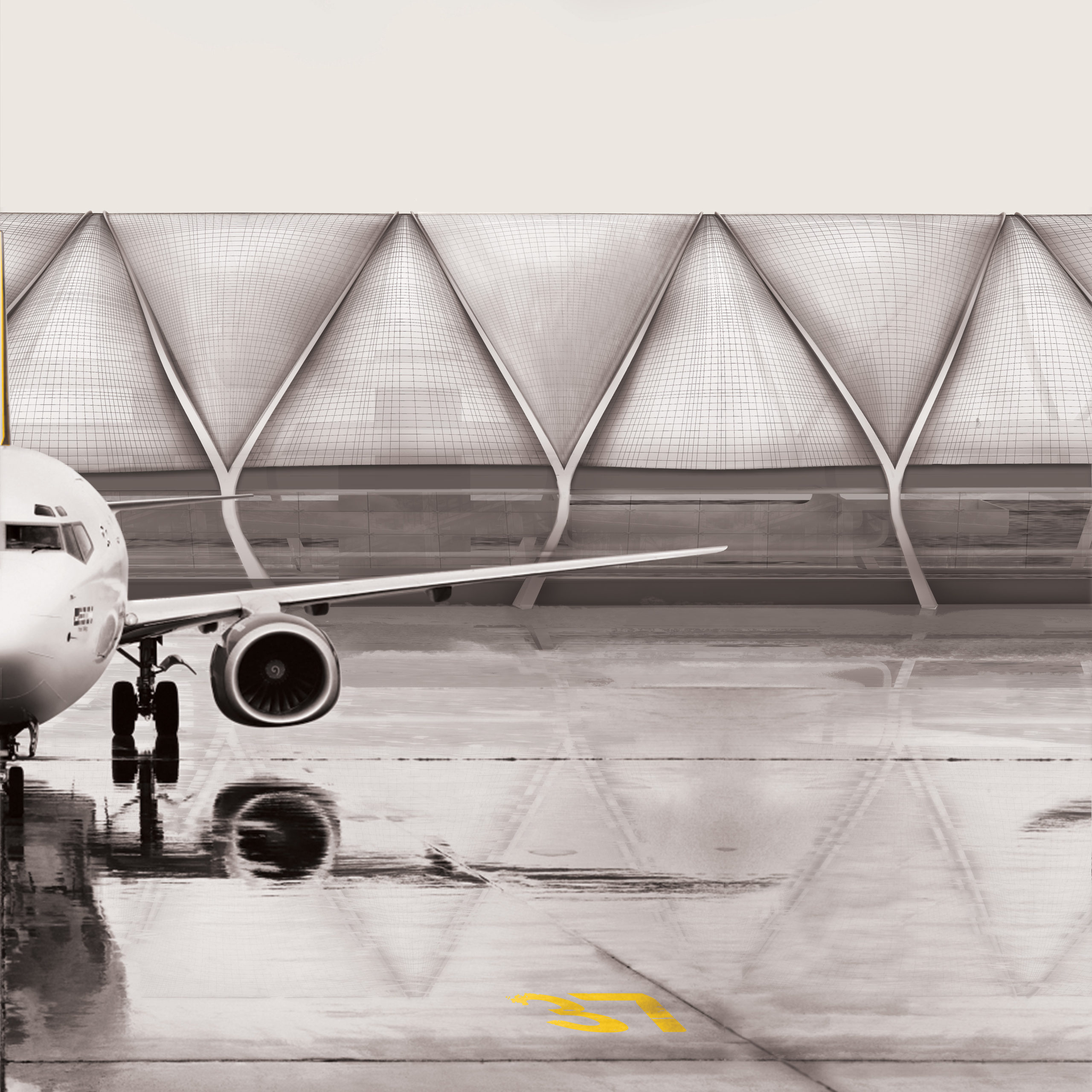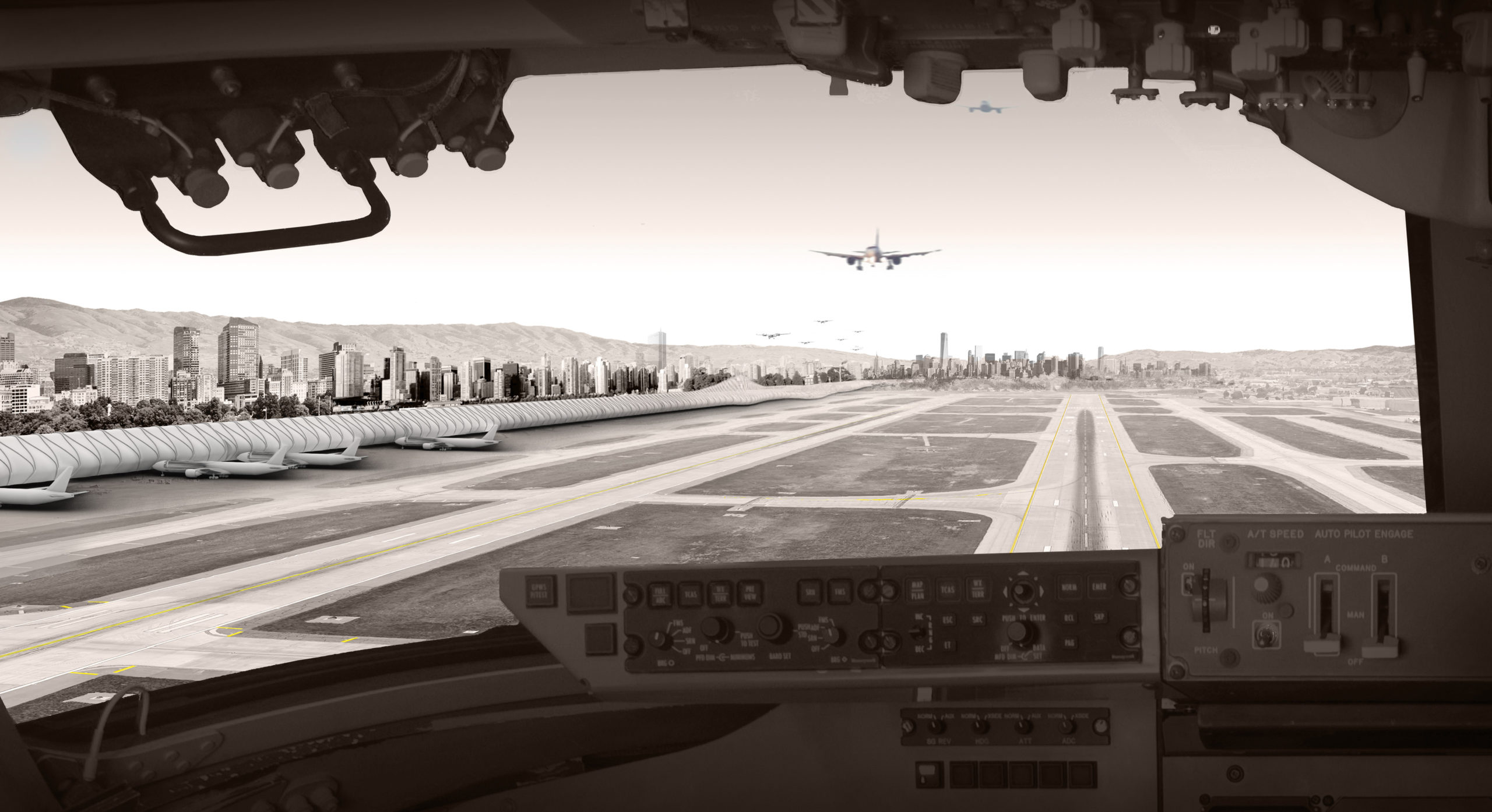Aviopolis 2070 – Refining Terminal Typology
Master Thesis by: Dana Kaddouh – M.Arch / Thesis Advisor: Mark Mueckenheim
Since the dawn of commercial aviation in the late 1920s, the popularity of the air travel has grown at an insatiable rate. Today, more than 3.5 billion people travel by plane each year, equivalent to half of the planet’s population. This number is predicted to grow to 7.2 billion passengers by 2035. As a result, destinations around the world are under pressure to expand their existing facilities or to construct large new hubs, mainly utilizing existing infrastructure. The aviation industry is ripe for change and innovation—the significant CO2 emissions impact of air travel and volatile fuel costs make sustainability a key concern for the future.I am text block. Click edit button to change this text. Lorem ipsum dolor sit amet, consectetur adipiscing elit. Ut elit tellus, luctus nec ullamcorper mattis, pulvinar dapibus leo.

Today’s airport terminal typology rests on a broken system, where airports are secluded, trapped within limited area without opportunity to expand, and are poorly integrated and disconnected from the city centers they represent, thereby becoming liminal non-places. This thesis proposal is looking at the ways current airport typology can be redefined to serve us in the next decades. This thesis recognizes the importance of continuous adaptation and development through an open-ended and integrated travel system where the airport becomes they city’s main artery, connecting people to the city center and the city to the world.
The system includes different support programs, such as temporary housing, municipal offices, entertainment and retail sectors, and connects to adjacent residential communities that benefit from it. In that sense, the city starts to grow around the airport artery, and the emerging system became a sequence of modular structures that allow for an adaptable and open-ended design with a high level of versatility.

The Spine as System
The system is comprised of a series of a structural units making up a V-braced frame structure which can adjust to different spatial needs. The main space is a linear arterial core bridging the urban center with the actual airfield. This spine is an infrastructure holding an array of different traffic systems. The arterial core widens, expands, and morphs in certain areas creating larger spatial nodes, which accommodate different programs that respond to the city’s fabric. For instance, they create an urban or green plaza or link to a high-density program, thus providing connection points between the spine and surrounding traffic infrastructure.
The building integrates alternative travel modes, such as the hyperloop, and incorporates platforms for smaller green and electric-powered passenger drones which take off vertically and travel to nearby urban centers. This will reduce the use of larger aircraft for domestic interstate travel, thereby reducing CO2 emissions. The arterial core also incorporates photovoltaic panels that will provide the electricity needed for the building, and potentially produce electricity for approximately 850 surrounding homes. Due to its triangulated section it also allows for efficient water collection and purification that can serve the surrounding communities and the water needs of the structure itself. In that sense the 4-mile building offsets a large amount of carbon emissions.

